35+ Yellow Fruits With Photos (From a Nutritionist)
There are lots of different fruits in the world, and each one has its own unique color. Today, we’re going to take a look at all the yellow fruits out there! From bananas to pineapples, these fruits will make your taste buds tingle with delight. So without further ado, let’s review this list of yellow fruits including information about what nutrition and health benefits they provide.
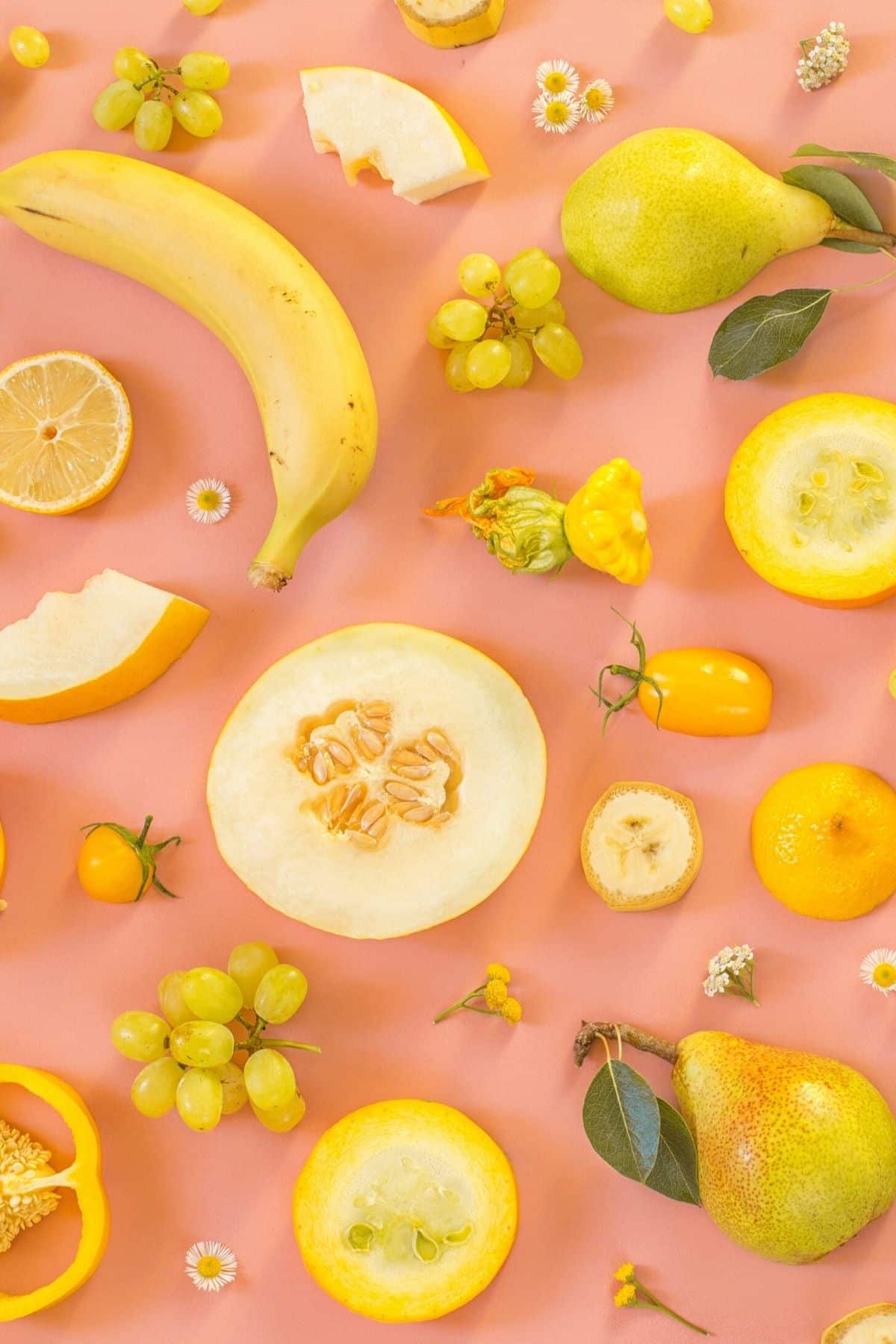
Yellow Fruits List
It’s important to eat the rainbow of foods, meaning that you should try to eat fruits and vegetables that have a colorful skin. From green vegetables to this list of yellow fruits, each food contains a unique flavor and essential nutrients.
You may not be able to find all of these foods at your grocery store, but this list is a great place to start when you’re looking to add fruits with bright yellow skin to your diet.
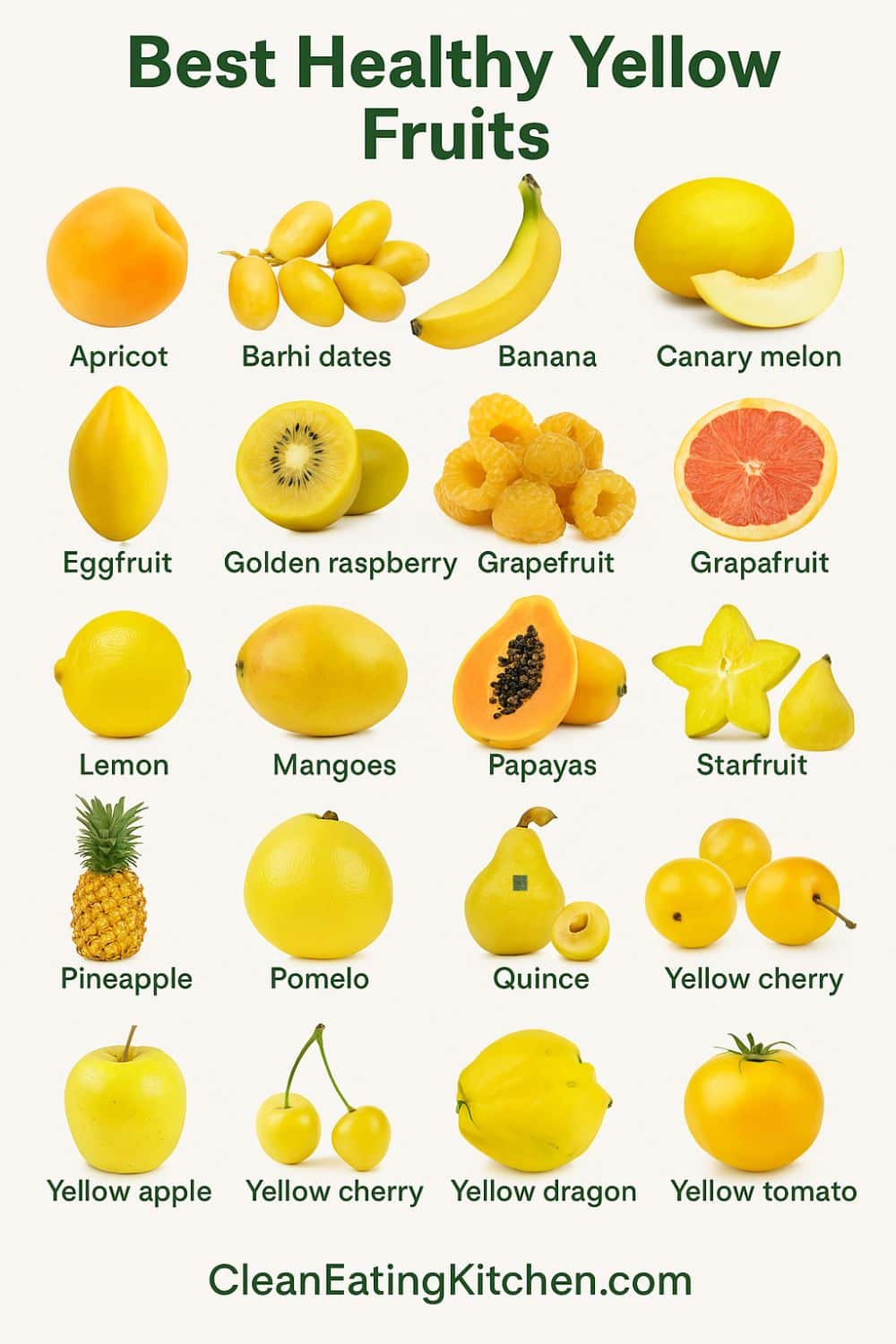
1. Apricots
Apricots are a sweet fruit that is native to Europe but is now grown around the world.
They’re known for their tart, apricot flavor, and firm texture. Let them get soft for their unique sweet flavor. The skin is edible so you can just eat them out of hand.
Apricots are a great source of dietary fiber, vitamin A, and potassium. This is a highly nutritious fruit that you should consider eating.
2. Bahrhi Dates
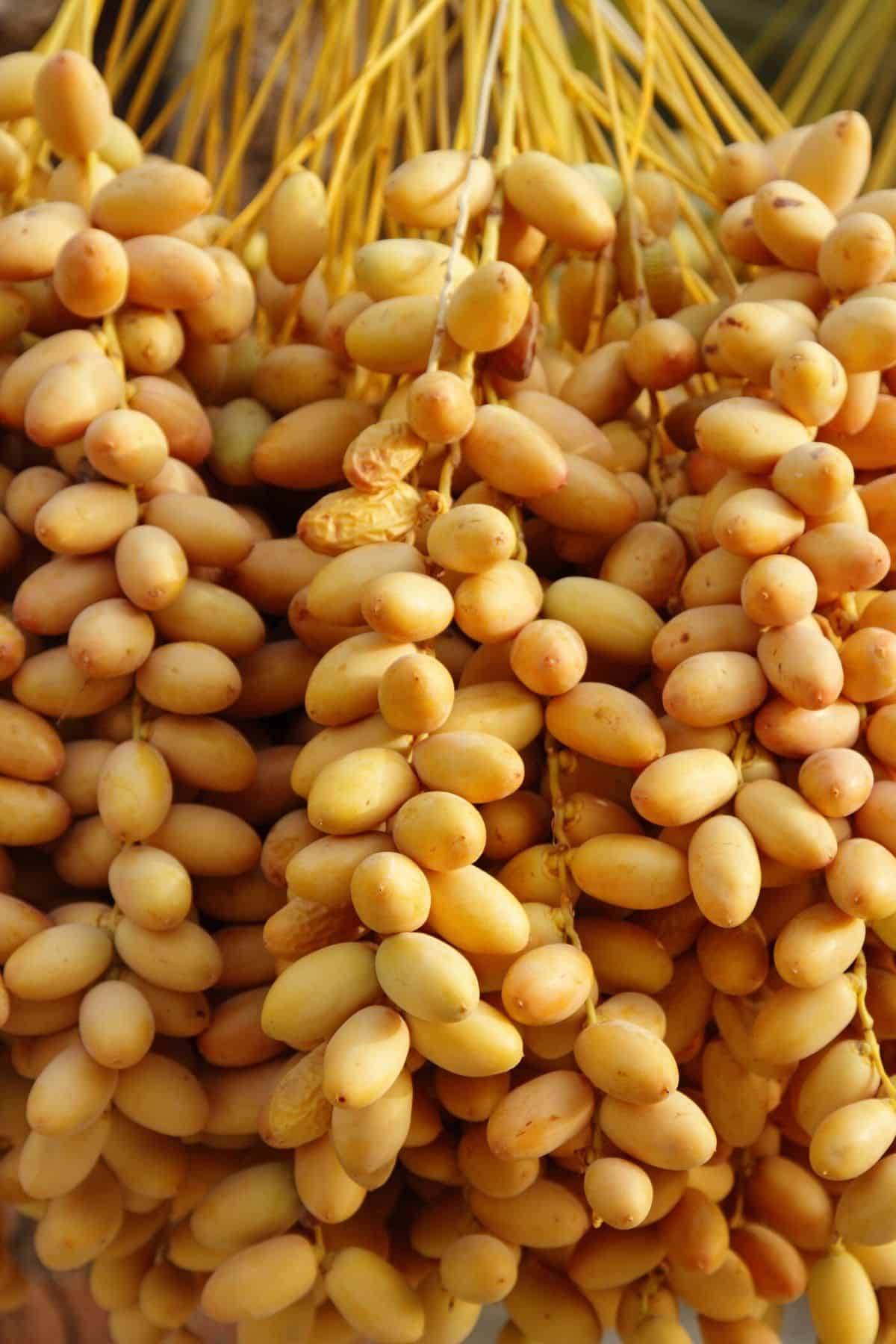
Bahri dates are a type of date that was originally grown in Saudi Arabia.
They are a type of Medjool date and are known for their sweetness and smooth texture. Yellow Bahri dates are often eaten as a snack or used in desserts.
I love using dates to sweeten recipes like my Strawberry Banana Chocolate Smoothie or my Avocado Chocolate Pudding.
3. Bananas
Bananas are one of the most popular yellow fruits in the world. They original from Central America and grow best in tropical regions.
They’re known for their sweet, creamy flavor and soft texture. Bananas are a great source of dietary potassium, vitamin C, dietary fiber, and vitamin B-12. They have a lot of health benefits in addition to being delicious!
See my post on how to freeze bananas for smoothies.
4. Canary Melon
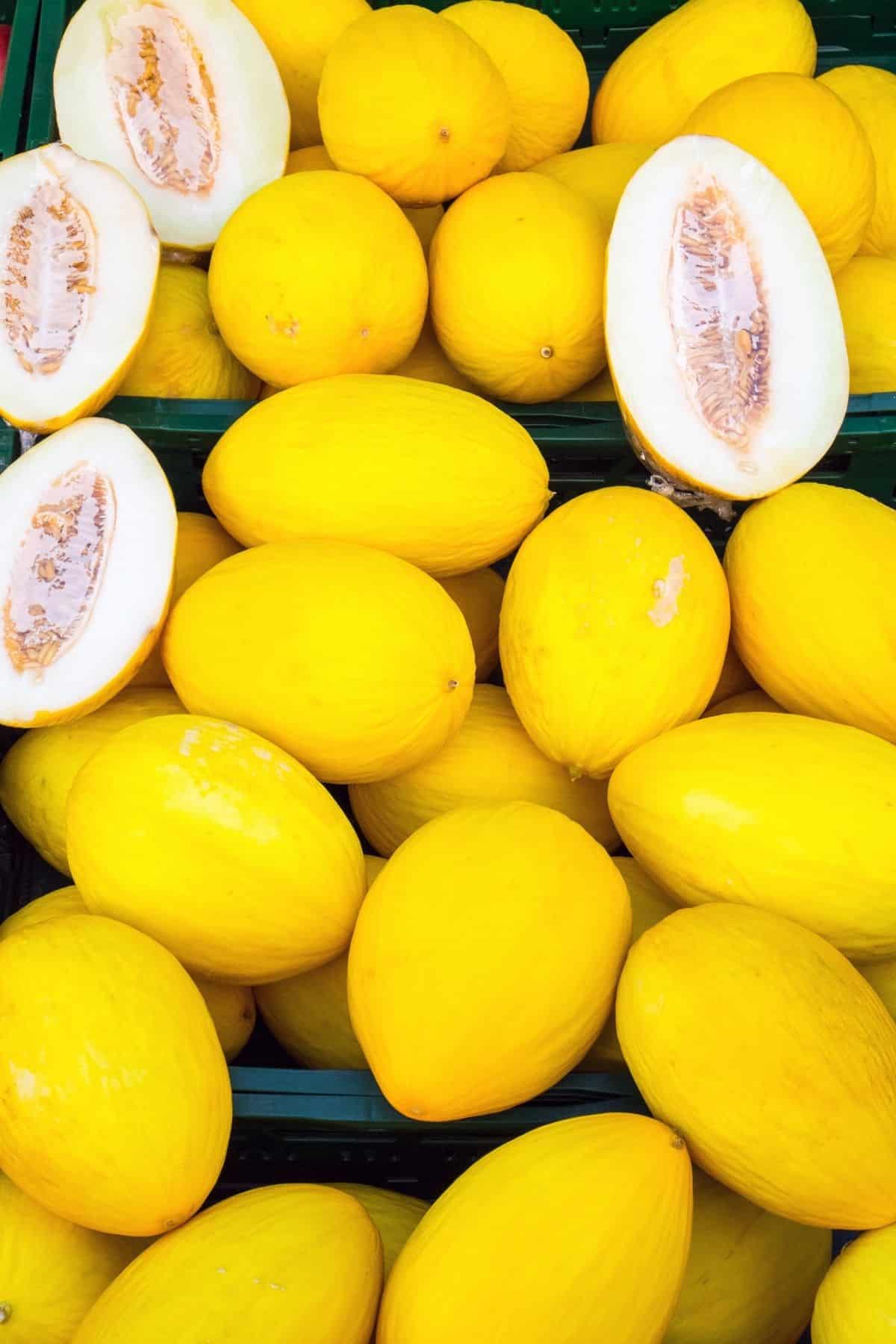
Canary Melon is a delicious fruit that can be eaten on its own or used in recipes. It is a good source of fiber and vitamin C.
This is one of my personal favorite melons of all time. I usually find them in the summertime in California at the farmers’ market.
5. Eggfruit
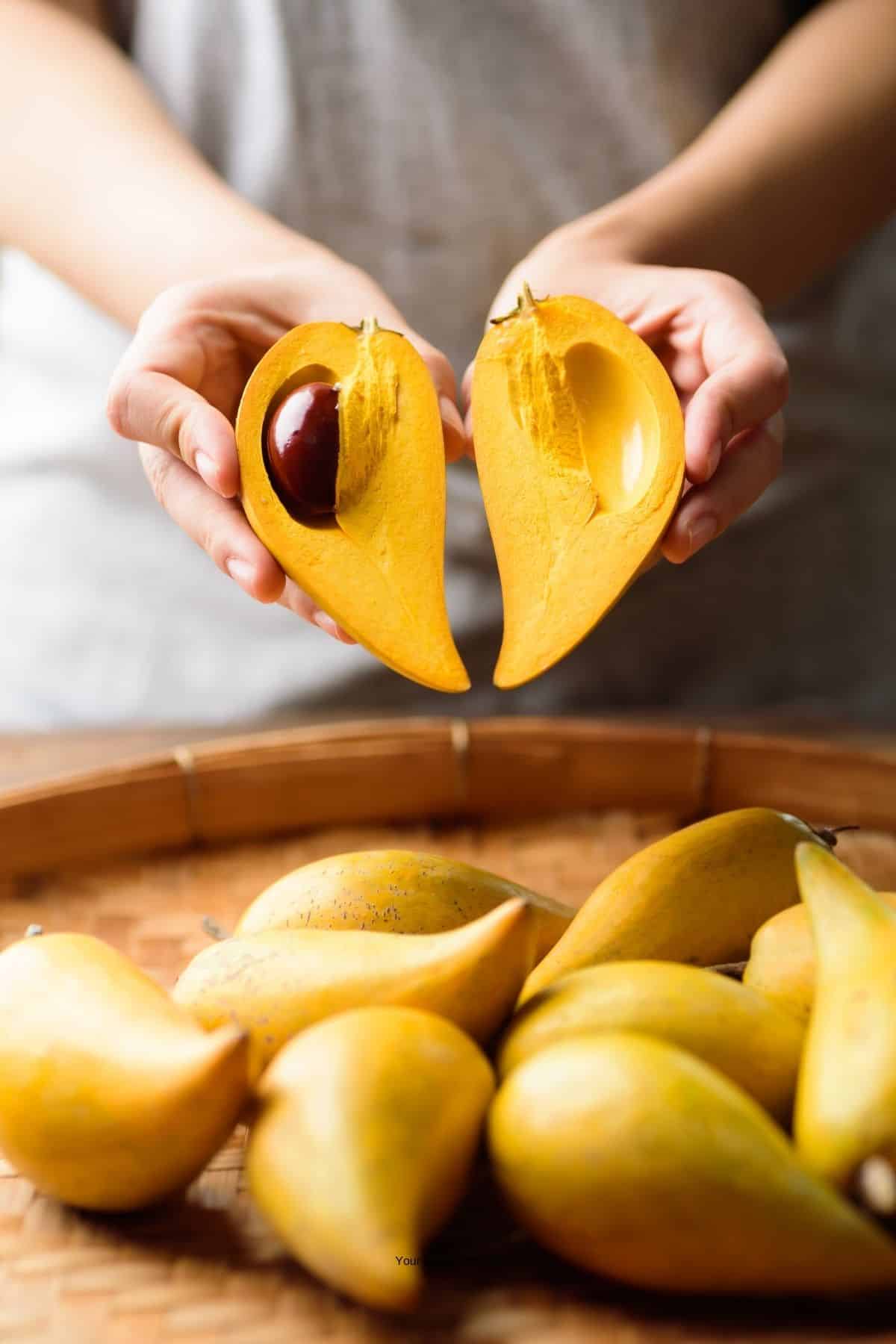
The eggfruit is a rare fruit that is the size of an egg. It has a hard skin and a soft, jelly-like center.
I’ve never seen these at stores nor have I ever tried one. Have you tried an egg fruit?
6. Golden Kiwi
Golden kiwi is a delicious fruit that is high in Vitamin C. It is a great source of energy, and it is perfect for snacking on the go.
Golden kiwis are a yellow-green color and they have a smooth skin. They are sometimes smaller than green kiwis, and their flavor is sweet and tangy. If you’ve never had one, you should definitely try a golden kiwi for their sweet taste.
This is my personal choice of kiwi as they tend to be sweeter than the green ones.
7. Golden Raspberries
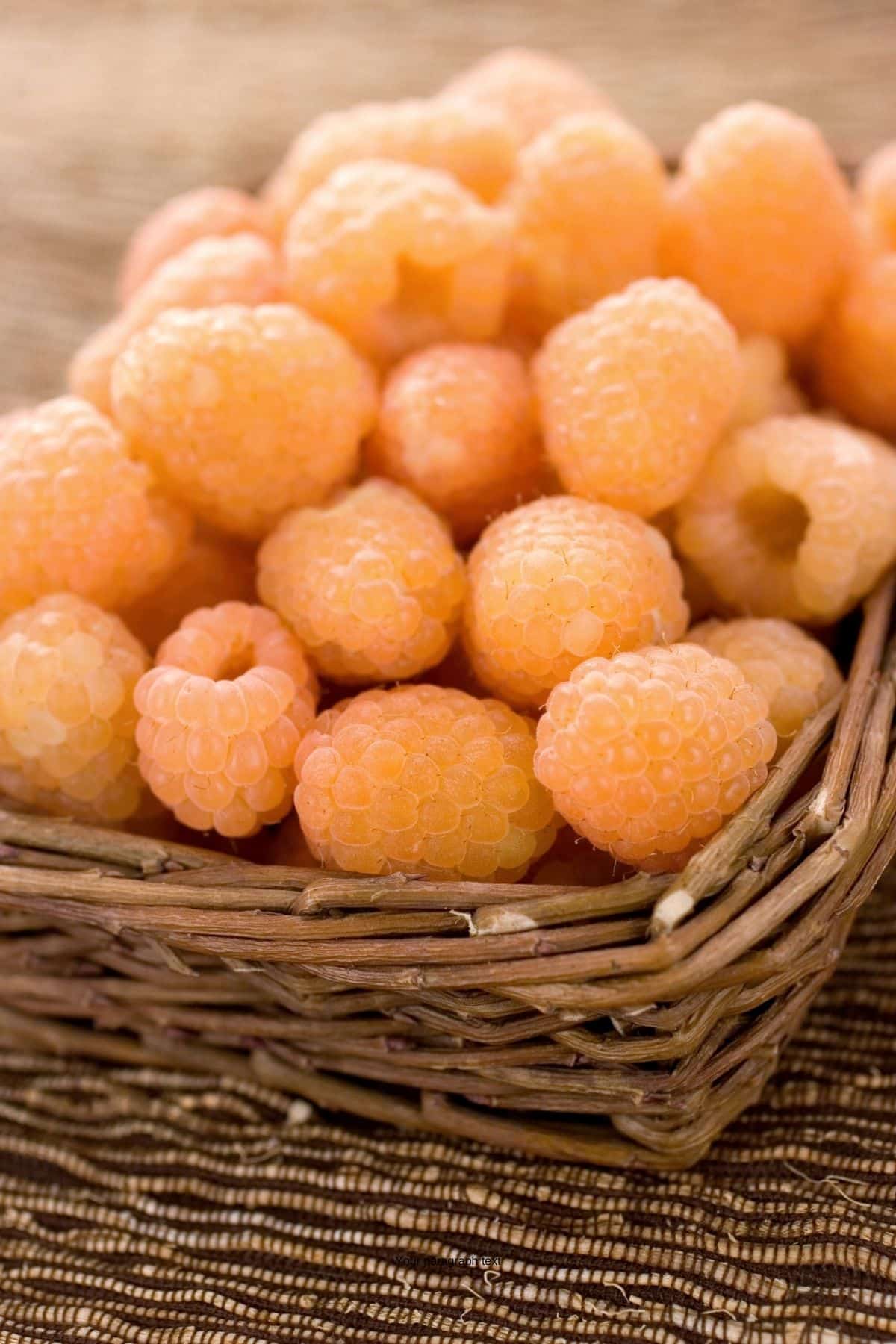
Golden raspberries are high in Vitamin C and taste wonderful. It’s a great source of energy and ideal for on-the-go eating.
Golden raspberries are low in acidity, which makes them sweeter and less tart than the red raspberry. They have a pink and yellow color to them and would be great in a Vitamix Sorbet.
8. Grapefruit
Grapefruit is a delicious citrus fruit that is high in Vitamin C. It is a great source of energy, and it is perfect for snacking or serving at breakfast.
There are different types of grapefruit, but most are yellow on the outside. The fresh of grapefruit can range from yellow to dark pink. Grapefruit is in season in North America from November to May.
Try my Grapefruit Strawberry Smoothie.
9. Lemon
Lemon is an excellent source of Vitamin C. It is also a good source of fiber, potassium, and magnesium. It also contains flavonoids and limonoids, which are antioxidants that help protect the body against disease.
Lemon is a sour fruit that is a member of the citrus family. It’s commonly used in cooking, both as an ingredient and as way of finishing recipes.
Don’t miss my recipe for Apple Cider Vinegar and Lemon Juice if you want to use up lemons. Or, check out my recipes for Cucumber Lemon Mint Water or Cinnamon Lemon Water.
10. Loquat
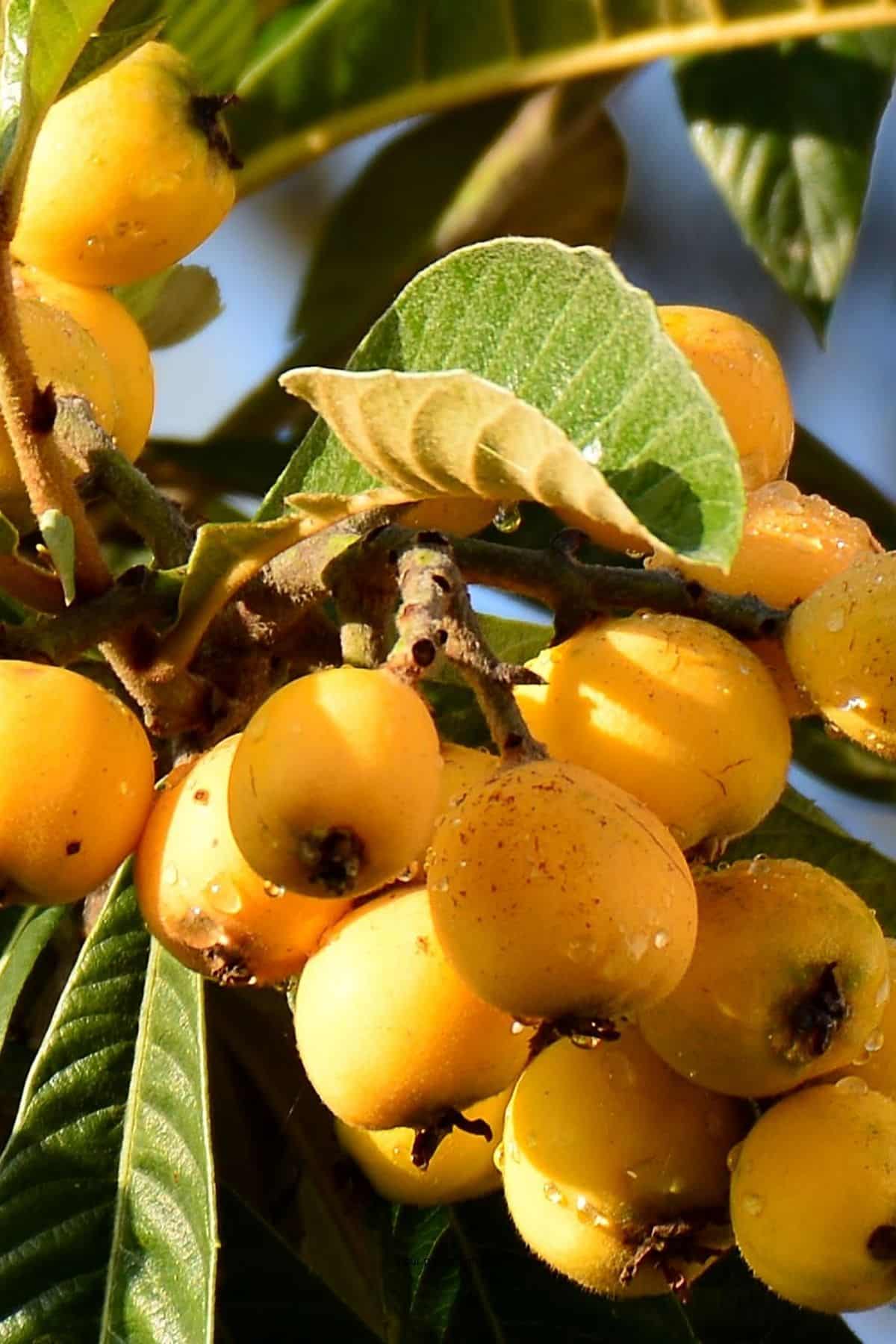
Loquats are a type of fruit that is native to China, but they are also grown in other parts of the world. They are typically eaten as a snack, and they are a good source of Vitamin C and dietary fiber.
Loquats are in season from winter to early summer.
See my related list of the best Asian fruits.
11. Mangoes

Mangoes are a delicious fruit that is native to India. They’re known for their sweet, tropical flavor and soft texture. Mangoes are a great source of dietary fiber, vitamin C, vitamin A, and potassium.
Don’t miss my recipes for Mango Strawberry Banana Smoothie, Dairy-Free Mango Ice Cream, Mango Pineapple Banana Popsicles, or Air Fryer Mahi Mahi with Mango Salsa.
12. Papayas
Papayas are a sweet fruit that is native to the tropics. They’re known for their sweet, papaya flavor and soft texture. Papayas are a great source of dietary fiber, vitamin C, and vitamin A.
I have a great recipe for Papaya Juice that is perfect when you want a refreshing sweet drink.
13. Pineapples
Pineapples are another delicious yellow fruit that are popular around the world. They’re known for their sweet, tangy flavor and juicy texture.
Pineapples are a great source of dietary fiber, vitamin C, manganese, and thiamin. They also contain bromelain which is an enzyme that can aid digestion. I love using pineapple when juicing for inflammation.
Check out my recipes for Pineapple Banana Smoothie, Pineapple Orange Smoothie, or Mango Pineapple Banana Popsicles.
14. Pomelo

Pomelos are a type of fruit that is grown in many different parts of the world. They are typically eaten as a snack, and they are a good source of Vitamin C and dietary fiber.
Pomelos are in season from winter to early summer and are related to grapefruits. They are sometimes known as a monster-sized grapefruit.
15. Quince
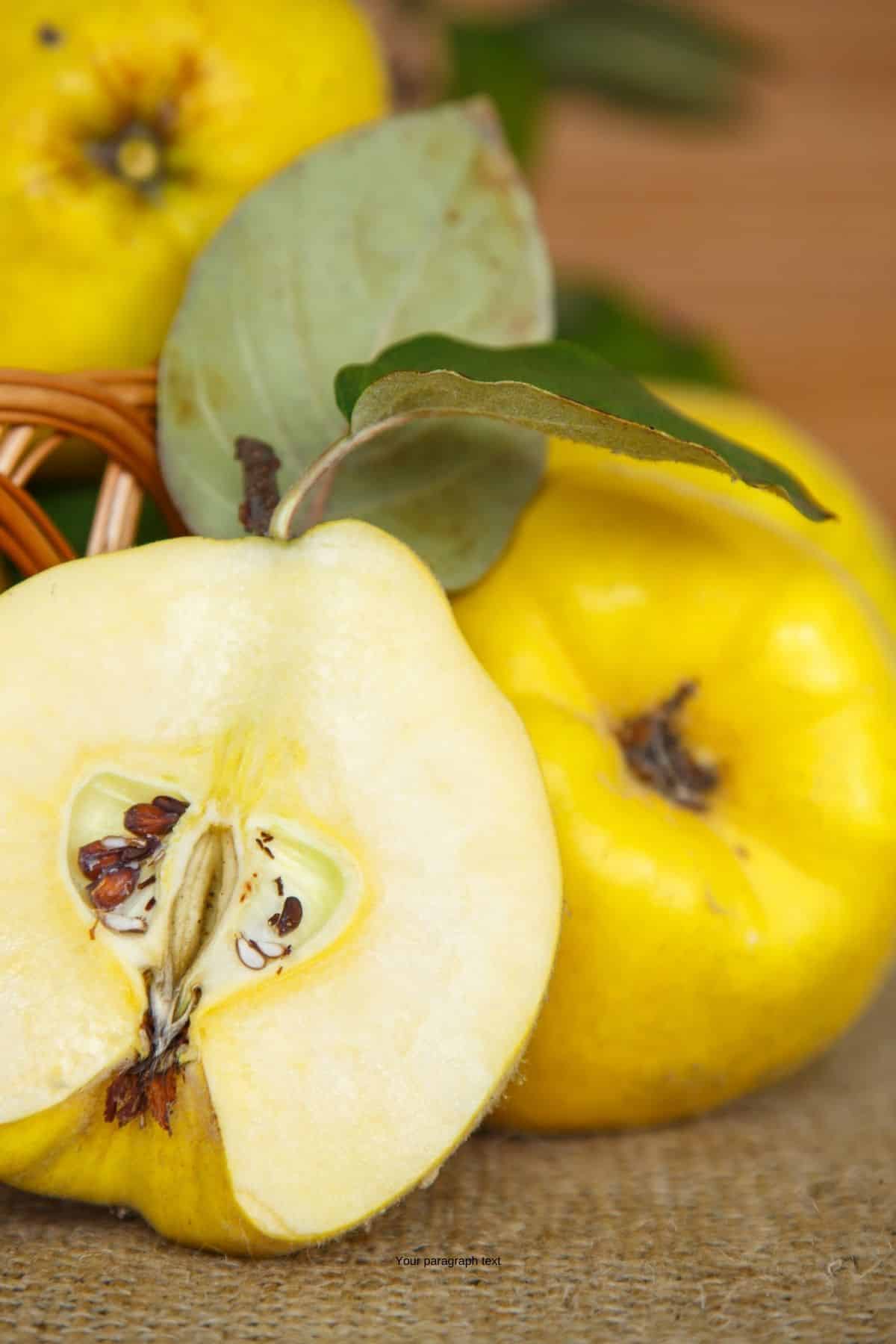
Quince fruit are a good source of Vitamin C, dietary fiber, and potassium. They are also a source of antioxidants and are very nutritious.
Quince fruit are best eaten when they are ripe and soft. They can be eaten by themselves or added to recipes.
I think this fruit would be great used in my Kale Juice Recipe to add some brightness of flavor and nutrition.
16. Starfruit
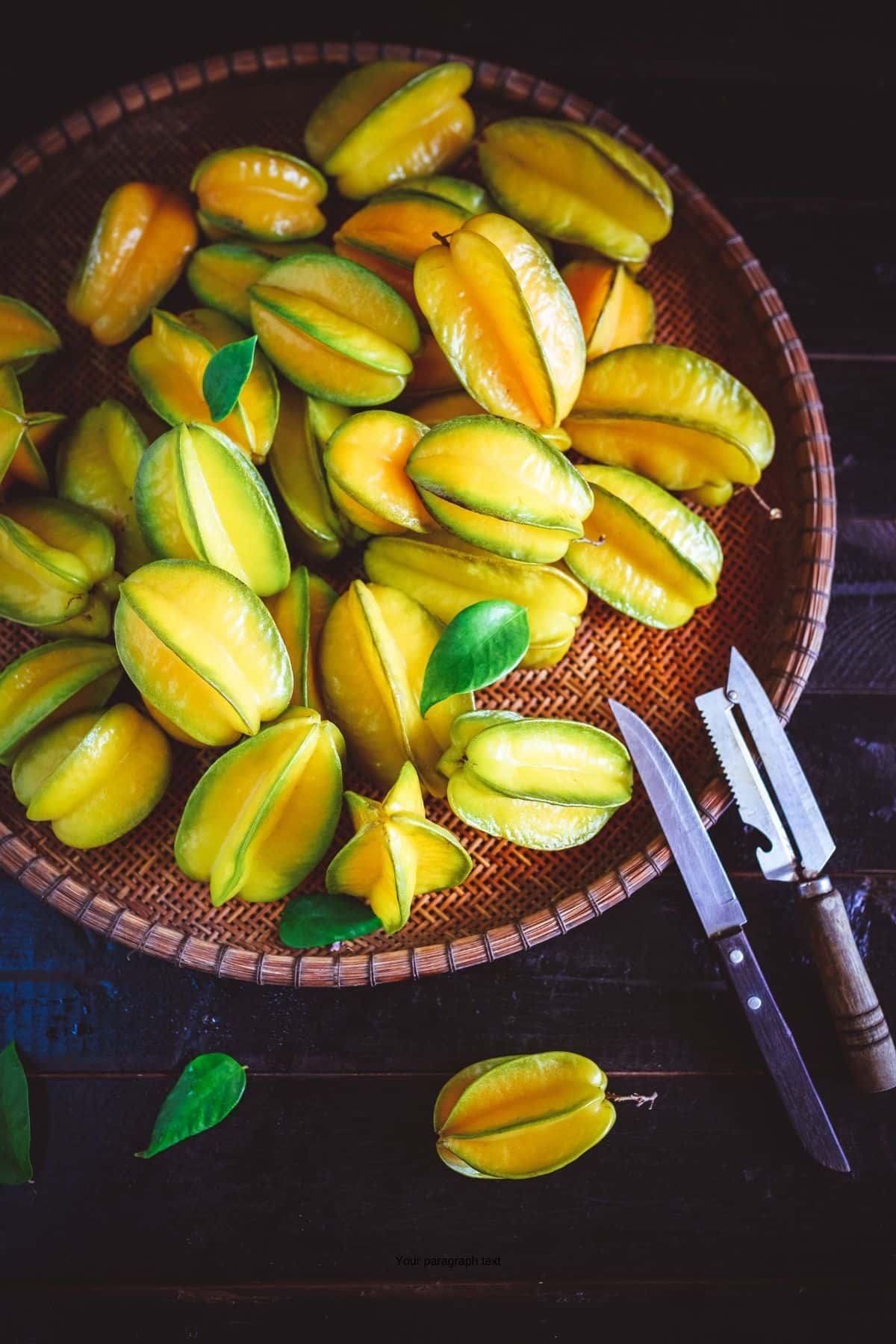
Star fruit typically have a star-shaped appearance. They are also known as carambola. They are a yellow or green color, and they have a sweet and sour taste.
Star fruit are in season from winter to early summer. They are one of the prettiest fruits out there!
17. Yellow Apple
Yellow apples are typically grown in the United States, but they can also be found in other parts of the world. Yellow apples can be eaten by themselves or added to recipes.
Apple season in North America typically runs from September to November.
Don’t miss my recipes for Air Fryer Apple Crisp, Air Fryer Baked Apples, Sugar-Free Apple Crisp, or Slow-Cooker Applesauce.
18. Yellow Cherry
Yellow cherries are a type of cherry that is typically grown in the United States. They are in season from summer to early fall.
Yellow cherries are a good source of Vitamin C and dietary fiber. They also contain antioxidants.
Yellow cherries can be eaten by themselves or added to recipes. Some examples include cherry pie, cherry cake, and cherry crisp.
19. Yellow Dragon Fruit
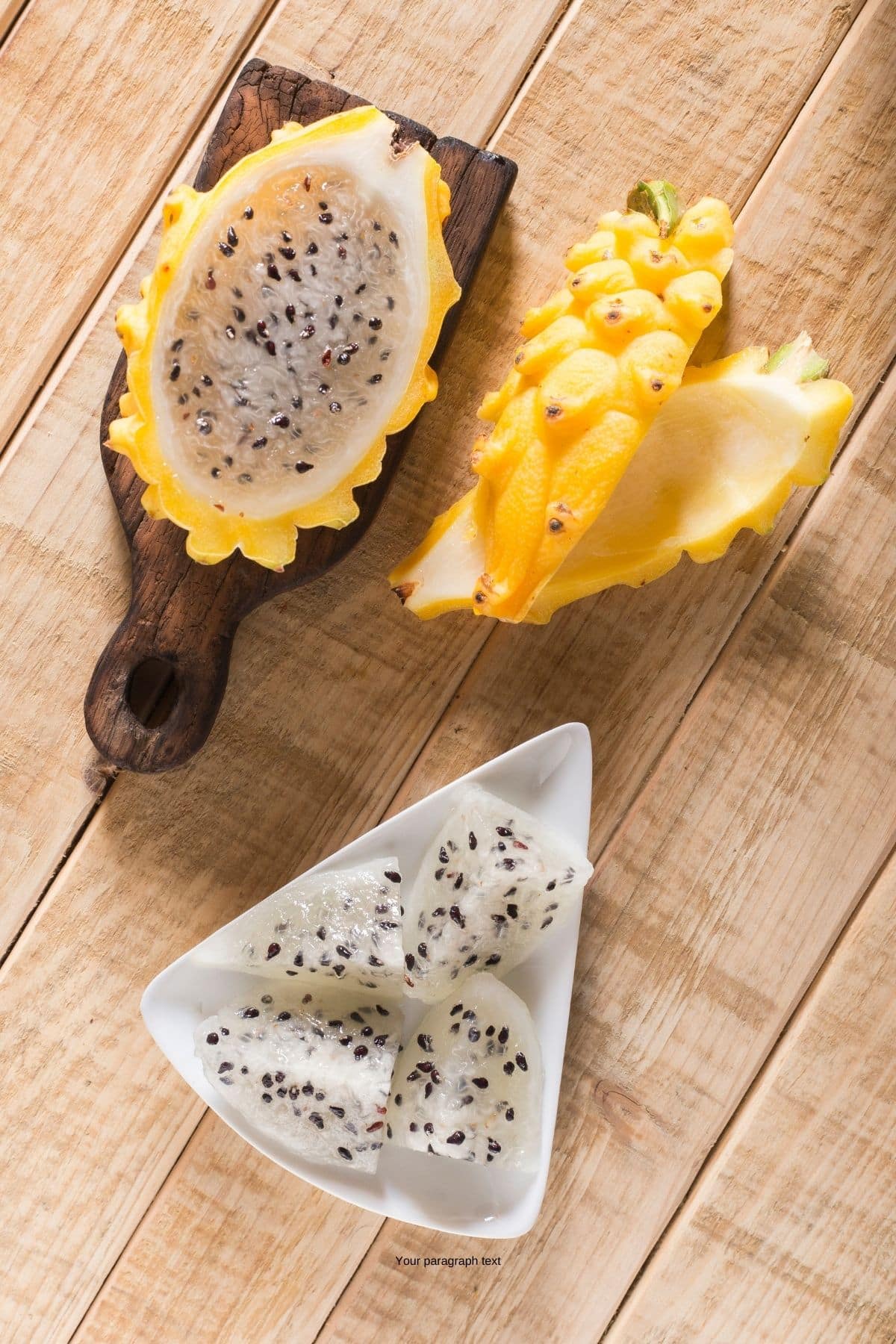
Dragon fruit, also known as pitaya, is a fruit that is typically grown in Southeast Dragon fruit is a good source of Vitamin C and dietary fiber. It also contains antioxidants.
Dragon fruit can be eaten by themselves or added to recipes. Some examples include dragon fruit smoothie, dragon fruit salsa, and dragon fruit salad.
Be cautious with this fruit as there are stories that it acts as a laxative for some people.
Learn more about yellow dragon fruit in this detailed article.
20. Yellow Fig
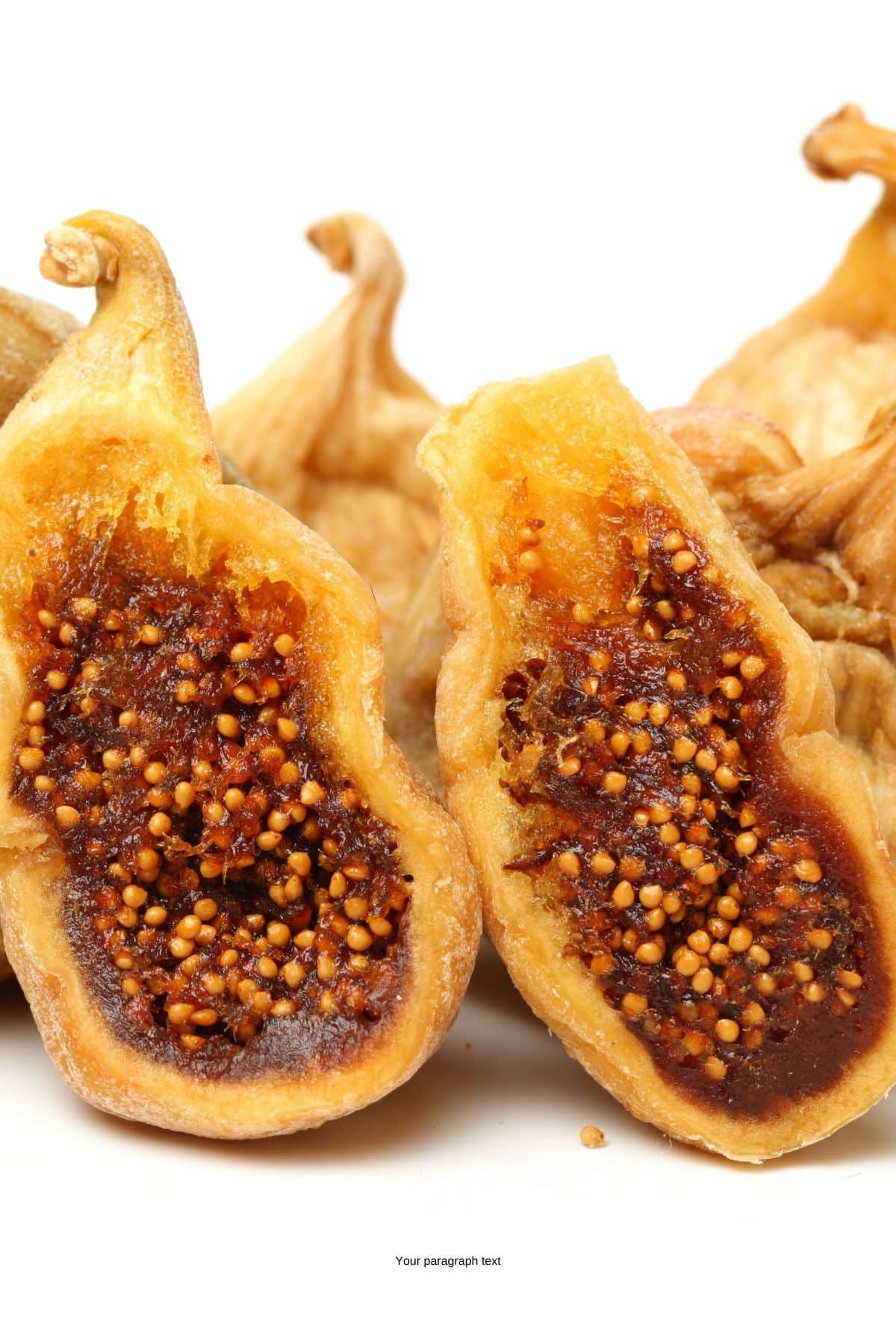
Yellow figs are a type of fig that is typically grown in the United States. Fig season in North America typically runs from September to November.
Yellow figs are a good source of Vitamin C and dietary fiber. They also contain antioxidants. Yellow figs can be eaten by themselves or added to recipes. Some examples include fig tart, fig cake, and fig jam.
21. Yellow Gooseberries
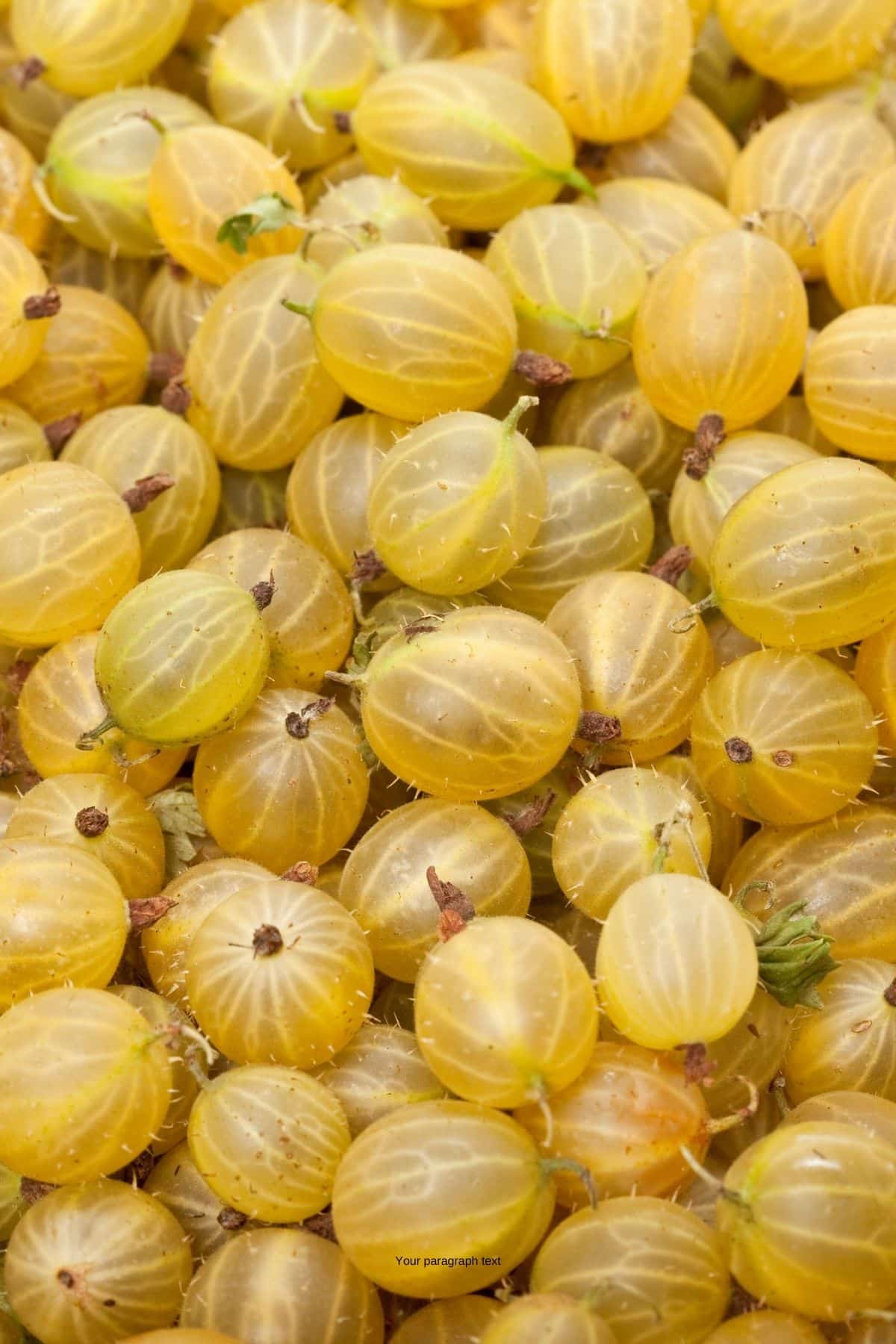
The gooseberry is a small, round fruit that is often green or red in color. It is native to parts of Asia and is used in a variety of dishes.
Gooseberries are a good source of Vitamin C and are low in calories.
22. Yellow Pear
Pears are a type of fruit that is often eaten as a dessert. They are typically yellow or green in color and have a smooth skin.
Pears are a good source of dietary fiber, vitamin C, and potassium.
I love using up extra pears when juicing for weight loss. They add natural sweetness to veggie juices. You may also like my recipe for Pear Juice. You can also use pear puree as an applesauce replacement in baking.
23. Yellow Plum
Yellow plums are a type of fruit that is native to Europe. They have a smooth skin and a sweet, juicy flesh.
They are a good source of vitamin C and dietary fiber.
24. Yellow Tomato
Yellow tomatoes are a variety of tomato that is typically orange-yellow in color. They are most commonly found in the Mediterranean region, where they are known for their sweet and acidic flavor.
Yellow tomatoes are in season from summer to early fall and can be used in the same way that red tomatoes are used. They are a good source of vitamins A and C, as well as potassium.
25. Yellow Watermelon
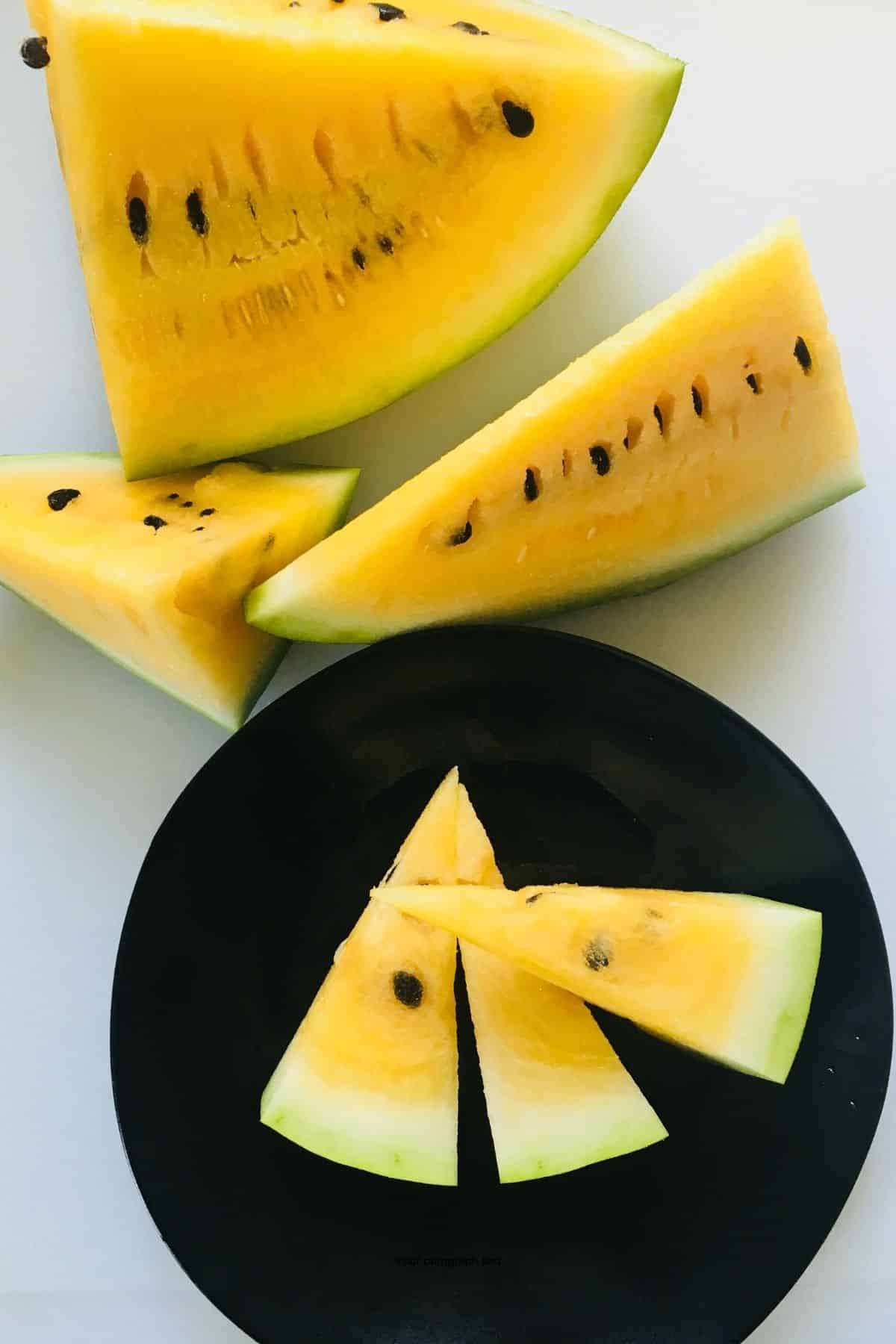
Watermelons are a type of fruit that come in many different colors, including yellow. Yellow watermelons are typically grown in tropical climates and have a sweet, juicy flavor.
They are in season from late spring to early fall. I’ve never seen one in person, have you?
26. Yuzu
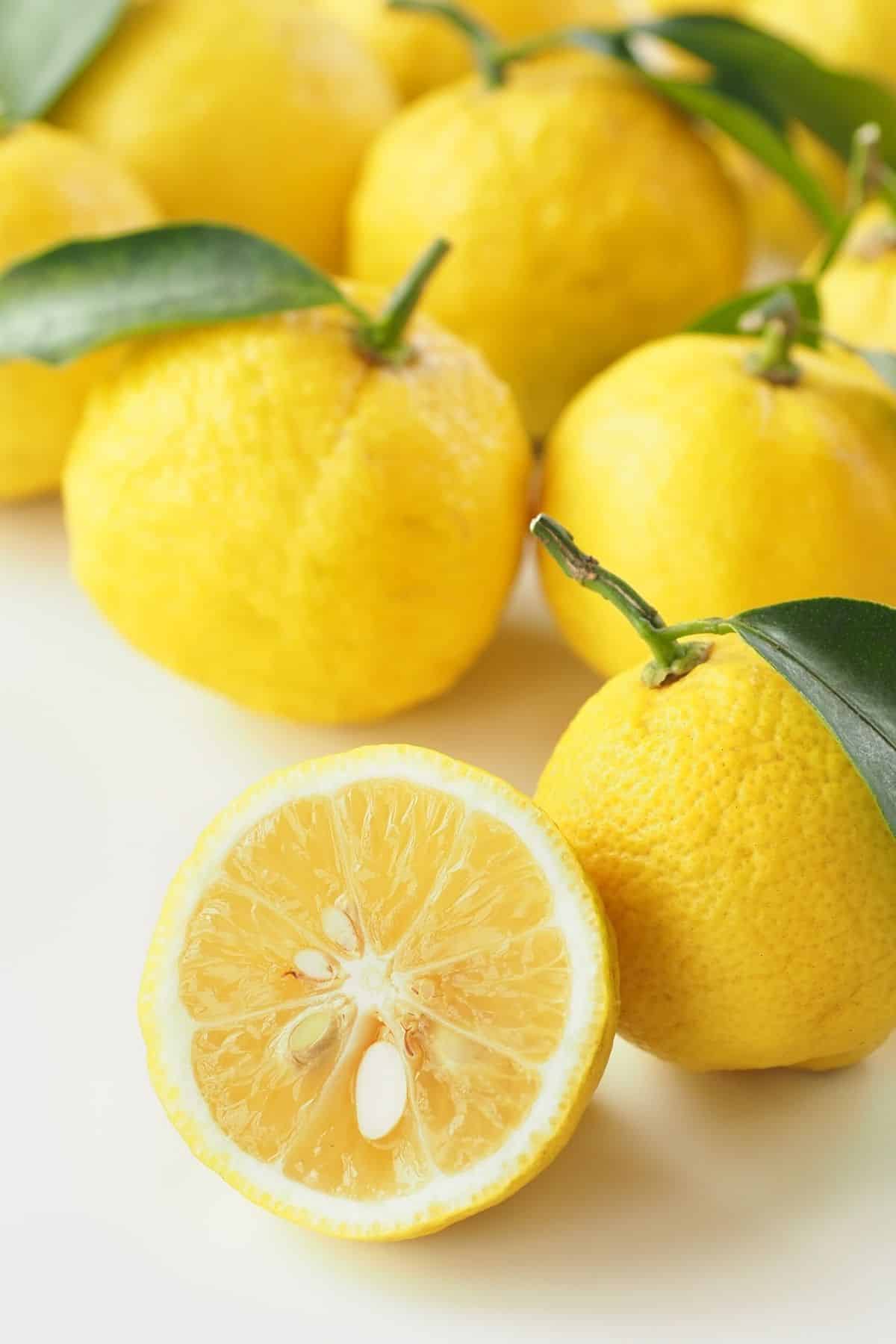
Yuzu is a type of citrus fruit that is native to East Asia. It is oval in shape and has a yellow skin. The flesh of the fruit is sour and acidic.
Yuzu fruits are usually eaten as a dessert or used in sauces and marinades. They are also used to make alcoholic beverages.
Yuzu fruits are in season from November to February.
27. Cherimoya
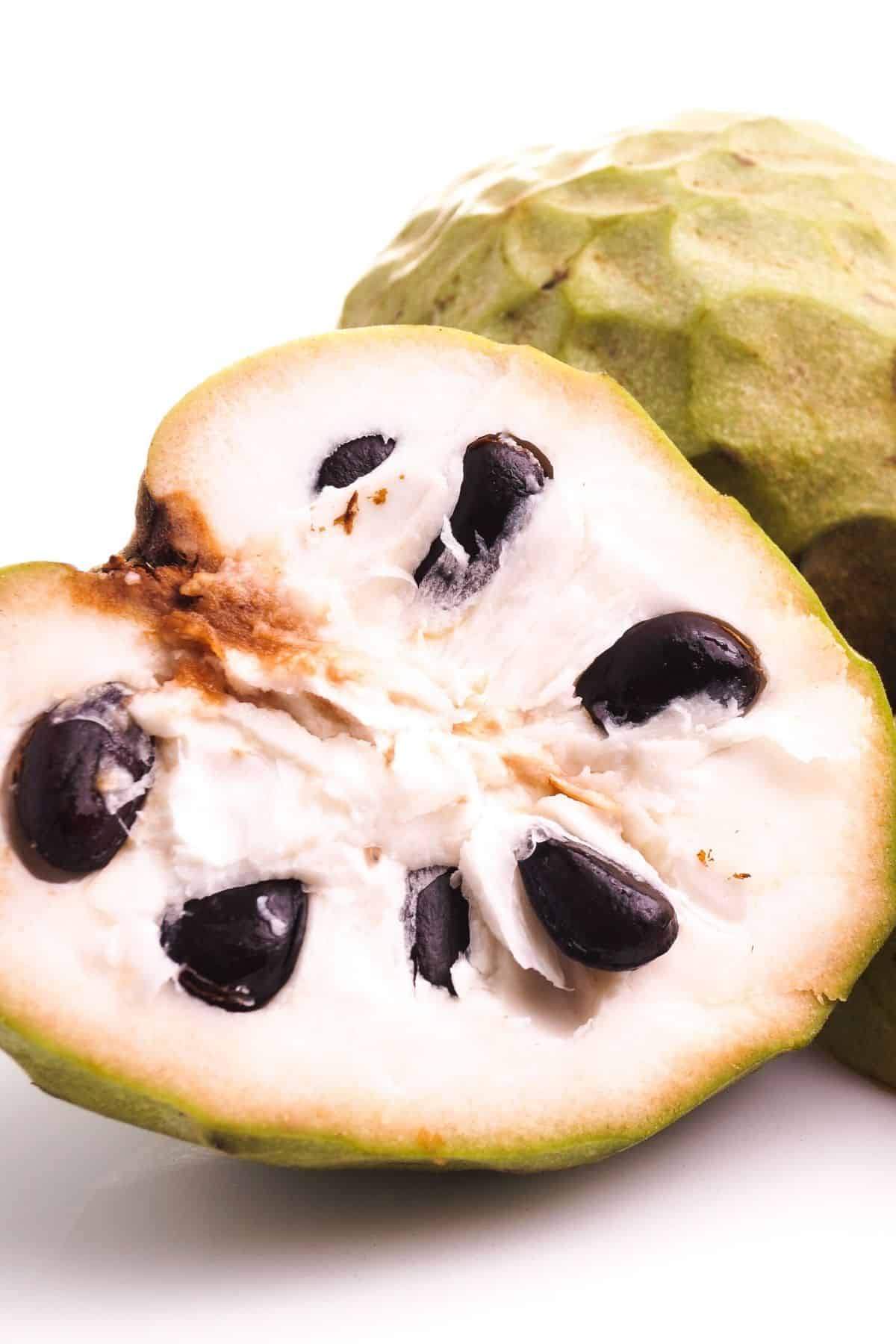
The cerimoya fruit is a tropical fruit that is native to Central and South America. The fruit is oval in shape and has a greenish-yellow skin. The flesh of the fruit is white or cream-colored and contains large black seeds.
The cerimoya fruit has a sweet, slightly acidic taste and is often used in desserts or as a decoration. The fruit can also be made into juice or jam. In some countries, this delicious fruit is known as a custard apple or paw paw. They may be my personal favorite fruit in the whole world!
The cherimoya tree grows to a height of 30 feet and produces yellow flowers. The tree blooms from May to June and the fruits ripen from August to October.
Bonus Yellow Fruits
This list is not exhaustive.
Additional yellow fruits that you can consider eating include: Mirabelle plum, Buddha’s Hand (citron), yellow bell peppers, Asian pears, Golden Delicious Apples (great in my recipe for how to make beet juice), and passion fruit (that have a yellow interior).
Any of these yellow fruits would be a great addition to your kitchen. Look for them in grocery stores or at the farmers’ market, especially for the more unique fruit.
Remember, a colorful diet is likely a healthy diet! Check out my lists for Blue Vegetables, Green Vegetables, and Orange Vegetables.
Don’t Miss These Fruit Lists
More Helpful Lists of Fruits and Veggies You Might Like
Conclusions
So there you have it! These are some of the most delicious yellow fruits in the world. If you’re looking for a sweet and tangy snack, then be sure to try out some of these amazing fruit varieties.
You may also like my article on the best green vegetables, red fruits or green fruits!
Don’t forget to join my newsletter list to get exclusive clean eating recipes and tips. The newsletter is 100% free with no spam; unsubscribe anytime.
About the Author: Carrie Forrest has a master’s degree in public health with a specialty in nutrition and is a certified holistic nutritionist. She is a top wellness and food blogger with over 5 million annual visitors to her site. Carrie has an incredible story of recovery from chronic illness and is passionate about helping other women transform their health. Send her a message through her contact form.
Note: this post is for informational purposes only and is not intended as medical advice. Please consult your healthcare provider for recommendations related to your individual situation.


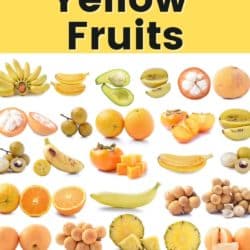
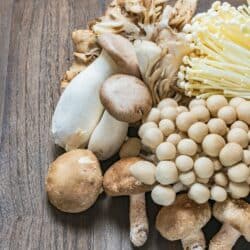
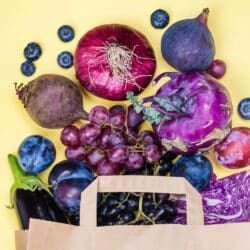
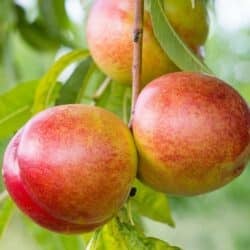
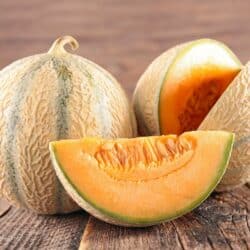



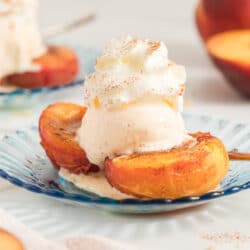
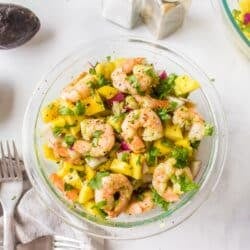
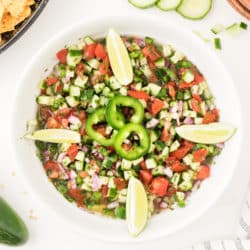








Thnks helpful